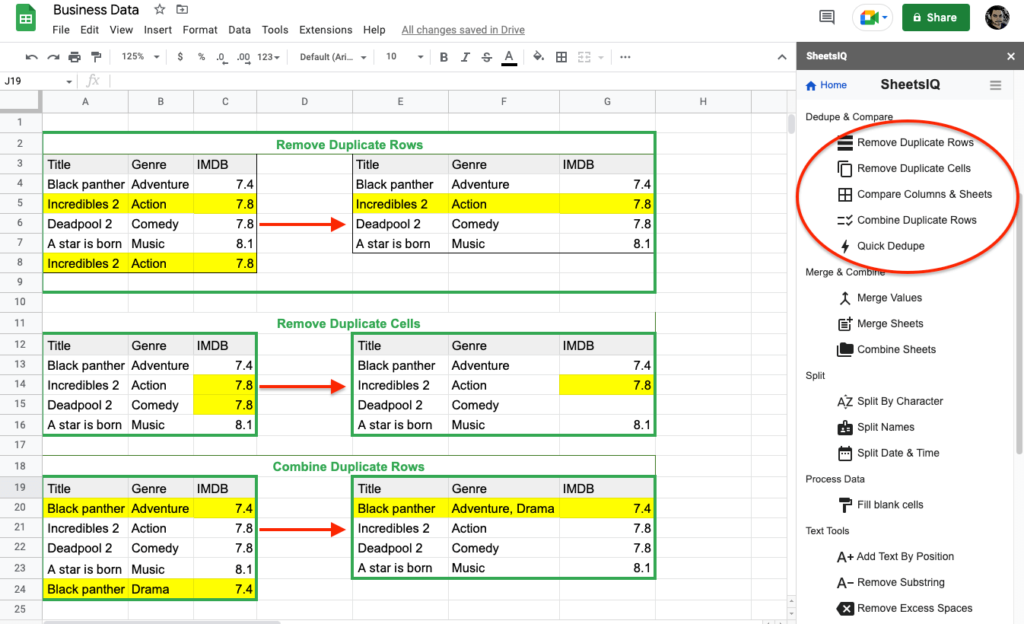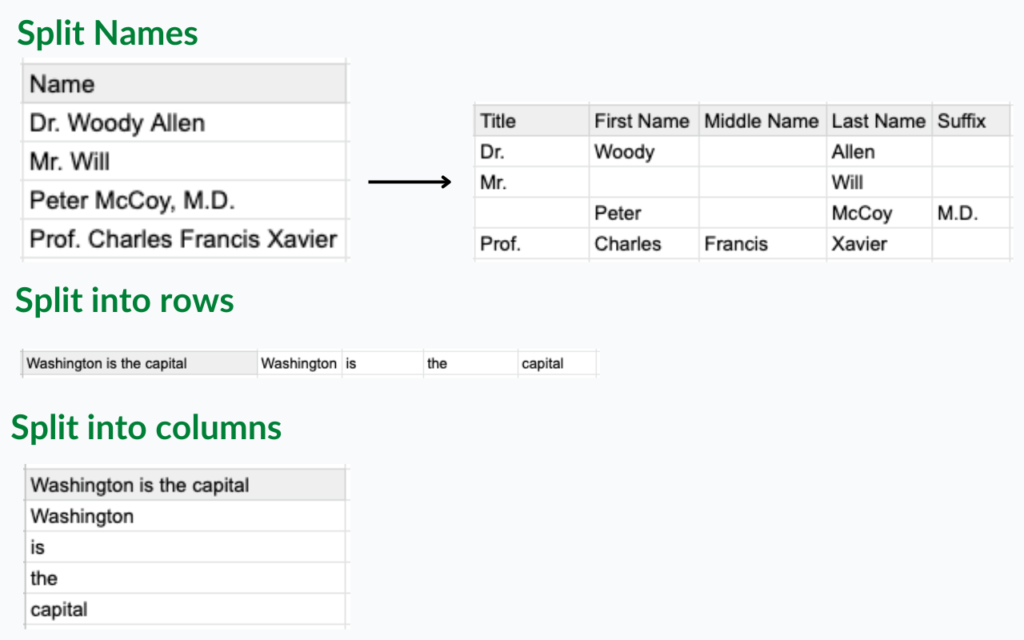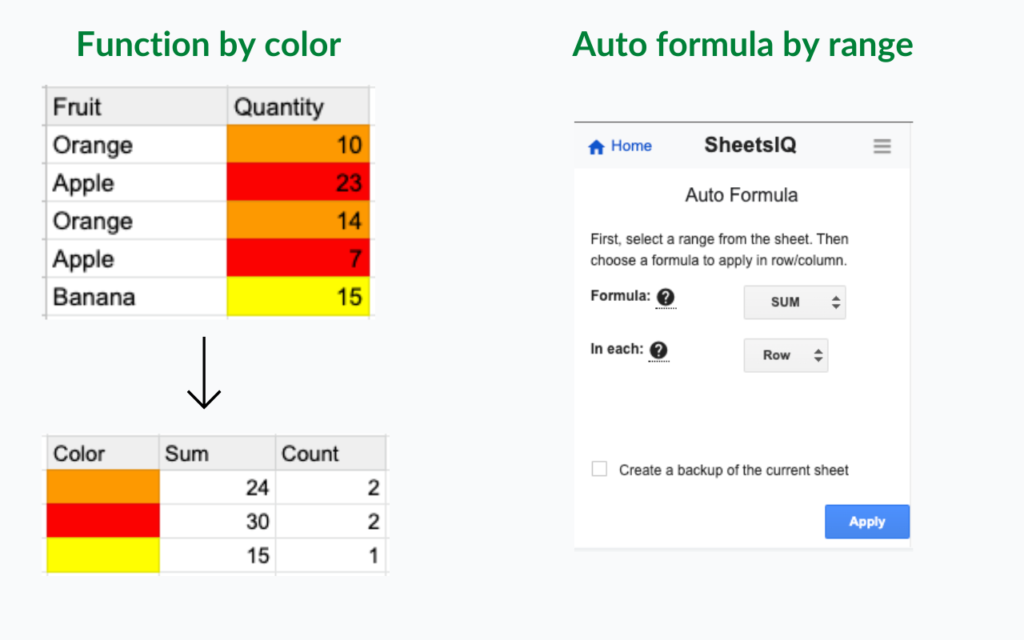SheetsIQ Tools for Google Sheets
Add-on for google sheets to 10x your productivity. Advance find duplicates, merge sheets, split data, text processing and many more.
No trial, no credit card required.
30+ smart tools to supercharge your sheets
No need to write formulas. Complex data calculation with few clicks. Save hours.

No-code No-formula data manipulation
SheetsIQ Tools is an add-on for Google Sheets™ to help you become super productive. With 30+ smart tools you can supercharge your data manipulation and calculation without writing any formula or app script code
Top features of SheetsIQ Tools
Dedupe
- Remove duplicate rows
- Remove duplicate cells
- Compare column & sheets
- Combine duplicate rows
- Quick dedupe


Merge & Combine
- Merge values
- Merge sheets
- Combine sheets
Text Processing
- Add text by position
- Remove substring
- Remove excess spaces
- Remove character by position
- Replace symbol
- Polish text


Split Data
- Split by character
- Split names
- Split rows & columns
- Split dates
General Tools
- Auto formula
- Function by color
- Change case
- Freeze & unfreeze
- Remove blanks
- Unpivot table
- Flip cells
- Unmerge cells
